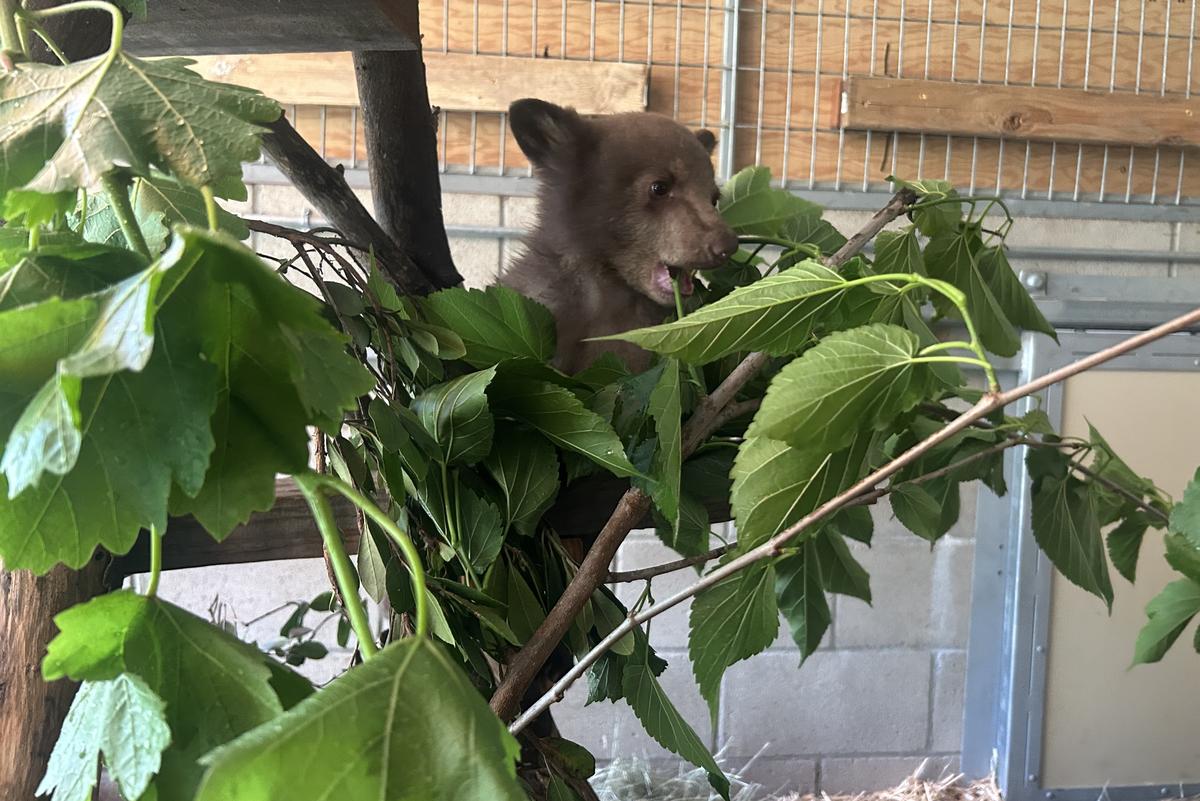Uncategorized
Keeping a Rescued Bear Cub Wild – NewsForKids.net
May 29, 2025
Real News, Told Simply.™
Since January, huge changes have been taking place in US politics. The effects of some of these changes will be felt around the world, and could last for a very long time.
NewsForKids.net has created a US Politics section to help track these changes.
Last Thursday, the United Kingdom signed an agreement which will return control of the Chagos Islands to Mauritius. In exchange, the UK will be able to continue using the largest island as a military base for the next 99 years.
NewsForKids.net now has a US Politics section.NFK now has a US Politics section.
Ramona, California —(Map)
When hikers in California came across a young bear cub crying on a trail last month, they knew they had to help. It was a rough start for the tiny bear, but now he’s safe, healthy, and growing fast. In a year or so, he may be ready to return to the wild.
On April 12, a group of campers in a California forest heard a crying noise. They discovered a small black bear cub that was all alone.
The California Department of Fish and Wildlife kept an eye on the cub. When the mother didn’t return, they took the bear to the Ramona Wildlife Center, which is run by the San Diego Humane Society. The center specializes in helping wild animals.
When the cub arrived, he was in bad shape. He was 2 to 3 months old, and he hadn’t eaten in several days. Workers at the center weren’t sure the cub would survive.
But they did what they could. They looked after him constantly, feeding him several times a day, and even at night.
The cub didn’t like being fed with a bottle, so workers began giving him milk in a bowl. Soon he began to improve and put on weight. He’s now nearly 10 pounds (4.5 kilograms) heavier than when he arrived.
“It’s been amazing just watching him grow and learn,” said Autumn Welch, who’s in charge of wildlife operations at the center.
To help the cub learn to survive in the wild, the workers are trying to keep him as wild as possible. That means they can’t let him get used to humans.
So when the workers are around the cub, they wear costumes, like a bear mask and a big bear coat. They wear thick gloves, and try to avoid letting the bear see or smell their skin. They even try to make the costumes smell like a real black bear.
Workers at the center are trying to teach the cub the skills he’ll need to live on his own. They’ve set up an indoor and outdoor area for the cub to live in and explore. They’ve made the areas as natural as possible, and included structures made of tree branches that the cub likes to climb.
The workers spend 60 to 90 minutes a day playing with the young bear. They do things that a mother bear might do, like teaching him how to dig up insects for food. They hide acorns, which the cub finds by smell and then eats.
The workers also play with him using teddy bears. “He will grab out, bite and wrestle,” says Ms. Welch. “These stuffed animals really do help.” The baby bear even goes to sleep with a large, stuffed bear.
Now that the cub is older and bigger, he’s eating more solid food, like fruit and dried pet food. He also eats insects, grass, and leaves.
The cub is still young, but he’s learning and growing quickly. The center hopes the cub can be set free in the wild in about a year.
www.washingtonpost.com
www.sandiegouniontribune.com
www.latimes.com
www.independent.co.uk
www.sdhumane.org
😕
This map has not been loaded because of your cookie choices. To view the content, you can accept 'Non-necessary' cookies.
As of 2023, NFK is testing the use of an LLM to help collate information and create early drafts of some articles. Final articles are rewritten, fact-checked, and edited.
Last month, the world’s shortest dog and the world’s tallest dog had a chance to meet. Reggie the Great Dane and Pearl the Chihuahua got along great. Their meeting was a fun reminder that friendship doesn’t depend on size.
In January, an iceberg as large as Chicago separated from an ice shelf in Antarctica. By chance, a scientific research ship was nearby. The scientists jumped at the rare chance to study an area of the ocean floor that had been covered by ice for thousands of years. What they found surprised them.
Scientists in Australia have used Artificial Intelligence (AI) to help them locate a rare bird called the Plains-wanderer. This new information will help scientists protect the birds, which are endangered.
A company called Colossal Biosciences has created thick-haired mice that they are calling “Colossal Woolly Mice”. The mice, created by editing DNA, are meant to be a step toward the company’s larger goal of recreating the extinct woolly mammoth. Not everyone thinks it’s a great idea.
Text © 2018 -2025 NewsForKids.net, unless otherwise noted.
Image licenses vary by source.
Necessary cookies are absolutely essential for the website to function properly. This category only includes cookies that ensure basic functionalities and security features of the website. These cookies do not store any personal information.
Any cookies that may not be absolutely necessary for the website to function or are used specifically to collect personal user data via analytics, ads, other embedded content are termed as non-necessary cookies. It is mandatory to procure user consent prior to running these cookies on your website.
Most news on NewsForKids.net is appropriate for all ages. When there is news that may not be suitable for all ages, we try to tag it. You can use the setting below to control whether content tagged in this manner is shown.

